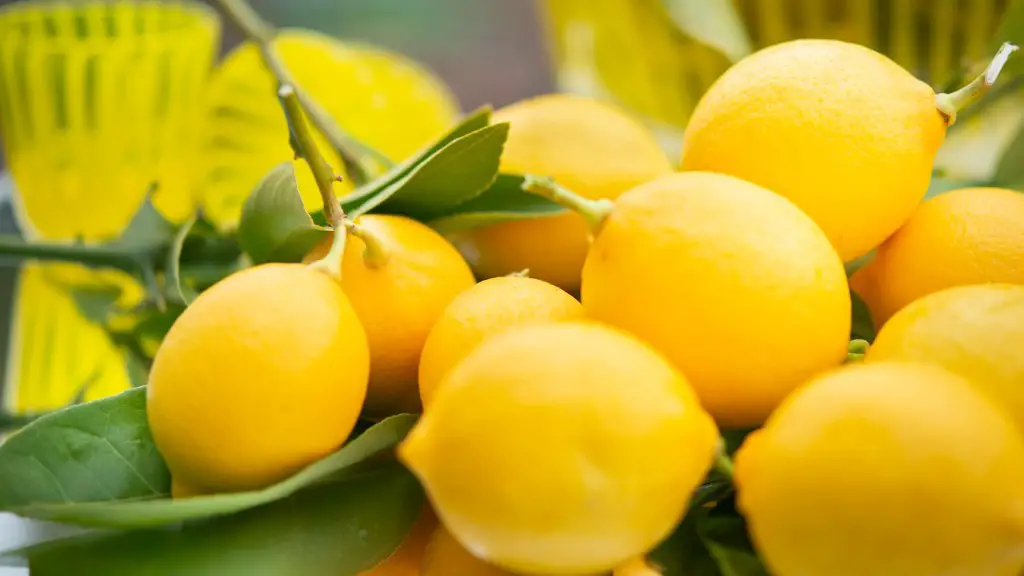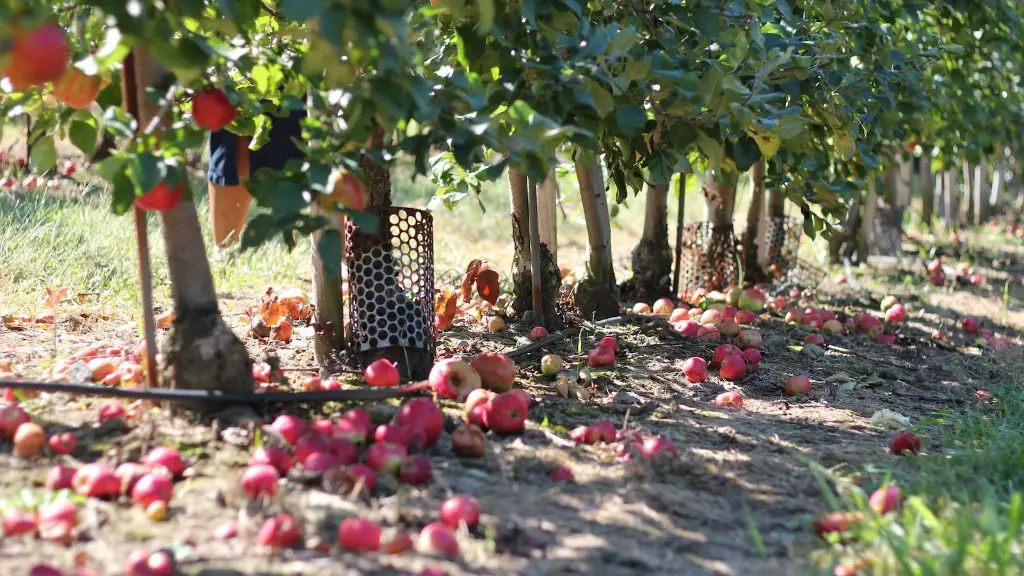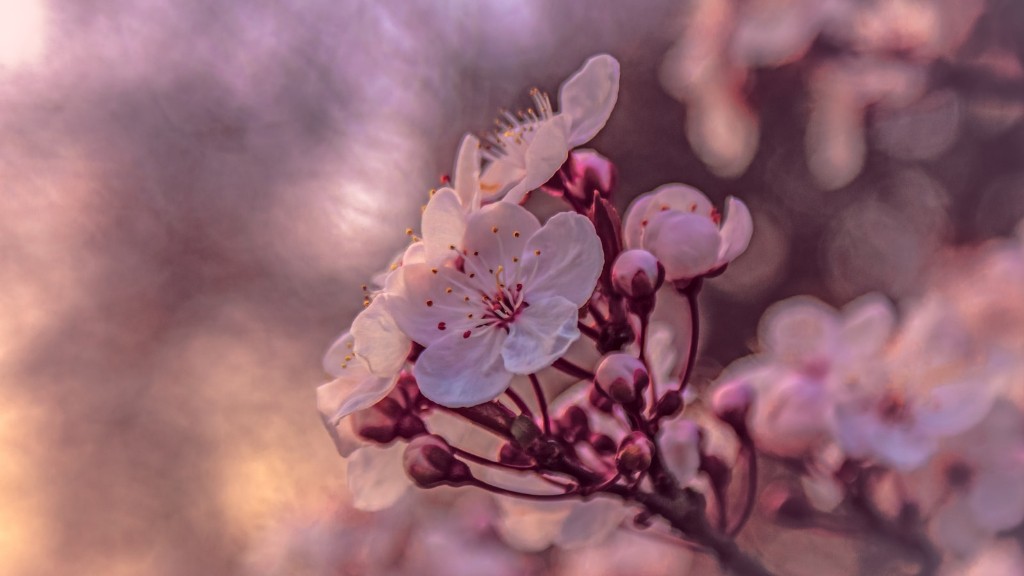Meyer lemon trees, also known as Citrus X Meyeri, are a hybrid of lemon and mandarin orange. They are popular plants because of their sweet, fragrant, juicy fruit and its ability to tolerate cold temperatures. An important part of successfully growing these trees is making sure they get enough light. The amount of sun they need every day will vary depending on the variety of tree and its environment.
Meyer lemons need at least 8 to 10 hours of bright, direct sunlight each day. This is the equivalent of 4 to 5 mid-day sun hours. If available, some morning sun is beneficial for the leaves, flowers, and fruit development. Meyer lemon trees in colder climates should get additional full sun hours to help provide extra warmth.
It’s important to adjust the amount of light depending on soil conditions and how much water the tree needs. If the Meyer lemon tree gets too much direct sunlight, it can lead to wilting. When the tree is grown in shade, the leaves may turn yellow and the tree will produce fewer and smaller lemons. In areas with extremely hot climates, the tree may need some shade protection during the hottest parts of the day, although it should still get at least 8 hours of sunlight.
It’s also important to note that citrus trees need more sunlight in the winter and less in the summer to help protect them from the intense heat. This means that you should adjust the amount of sunlight your tree gets depending on the season. Moving the tree to receive more shade during the hottest summer months may be beneficial.
Placing the Meyer lemon tree in the ideal location is essential for its health and growth. Before planting the tree, it’s important to take the time to find a sunny spot to position your lemon tree. You should also choose a place that has good air circulation to prevent the spread of disease.
Overall, Meyer lemon trees require 8 to10 hours of full sun each day. This varies depending on soil conditions and the climate where the tree lives. Make sure to observe your tree and make adjustments as needed, such as adding more shade during the hottest part of the day in hot climates.
Sun Requirements for Meyer Lemon Trees
Growing a Meyer lemon tree begins with finding the perfect spot to position your plant. It’s essential that the tree receives 8 to 10 hours of bright, direct sunlight each day. This will help the leaves, flowers, and fruit develop. If the tree receives too much sun, it can lead to wilting, so the amount of light needs to be adjusted depending on the soil conditions and temperature.
The frequency and intensity of the sunlight should also depend on the season, with less sunlight needed during summer months to protect the tree from extreme heat. Consider providing extra full sun hours to trees in colder climates, as this can provide added warmth and protection. Additionally, Meyer lemon trees need good air circulation to prevent the spread of disease.
In summary, it’s important to provide the right amount of sunlight for Meyer lemon trees. When selecting a spot to position your tree, ensure that it will receive at least 8 to 10 hours of full sun each day. Make sure to adjust the sun exposure depending on soil conditions and season, and always keep an eye on the tree’s health and growth.
Light Allotment for Meyer Lemon Trees
Placing the Meyer lemon tree in the right setting is paramount for its health and growth. Making sure that the tree is receiving plenty of direct sunlight each day should be at the top of your priority list. Generally, Meyer lemon trees need 8 to 10 hours of full sun each day; this could include some morning sun for their leaves, flowers, and fruit growth.
For Meyer lemons in colder or hotter climates, this can be adjusted depending on soil conditions and temperature. For example, in areas with extreme heat, some shade may be beneficial during the hottest part of the day; however, the tree should still receive at least 8 hours of direct sunlight each day. Alternatively, in colder climates, additional full sun hours can protect the lemon tree from cold temperatures.
In wintry months, the tree may need more sunlight and in summer it should have less. Meyer lemon trees should always have good air circulation to protect them from disease. Before planting your tree, take the time to find a sunny spot to play your lemon tree that meets the light requirements associated with this type of plant.
In conclusion, Meyer lemon trees require 8 to 10 hours of full sun each day to meet their nutritional needs. The frequency and intensity of the sunlight may adjust depending on the season and soil conditions of where the tree is located. Keep in mind that too much direct sunlight can lead to wilting, so provide a good balance of sun and shade for your tree.
Best Acidity for Meyer Lemon Trees
The ideal location for a Meyer lemon tree is one that is sunny and provides good air circulation. This is because sunlight stimulates the tree’s photosynthesis, aiding in the growth of its leaves, flowers, and fruit. Generally, Meyer lemon trees need 8 to 10 hours of full sun each day, including some morning sun if available.
The amount of sunlight your tree needs can also vary depending on the season, soil conditions, and the climate. For example, while the tree should receive between 8 and 10 hours of sunlight each day, in places with extreme heat, some shade should be provided during the hottest part of the day. Additional full sun hours may be beneficial in colder climates.
The acidity level of the soil also affects how much sunlight the tree will need. Clay soils can be acidic and need more light, whereas sandy soils are often alkaline and require less light. Finally, it’s essential to know how much water you will need to give your tree; too much or too little water can mean that your tree will need more or less sunlight.
In summary, the amount of light required by a Meyer lemon tree will vary depending on soil conditions, climate, and season. On average, 8 to 10 hours of full sun each day is ideal, along with some morning sun if available. Be sure to adjust the amount of light based on the conditions and check soil acidity, as this will also affect how much sunlight the tree needs.
The Impact of Northing in Meyer Lemon Trees
Growing Meyer lemon trees in the correct environment is important for their health, growth, and ability to produce sweet and juicy fruit. Finding the perfect spot for your lemon tree is essential and should include 8 to 10 hours of full sun each day, depending on the soil and climate conditions.
It’s important to take the direction of the sun into account when selecting the right spot for the tree. Rapid temperature changes due to north or south-facing windows can cause the tree leaves to yellow, while sometimes the excessive midday sun may cause the leaves to dry. Thus, an east-facing window is typically the ideal direction, as it will protect the tree from the morning sun and provide light throughout the day.
In addition, the north-facing side of the Meyer lemon tree will need more shade than the south-facing side. During the summer, the south-facing side will need more protection from the direct sun, whereas during winter the north-facing side will benefit from more hours of light and warmth.
Overall, providing the correct amount of sun is essential for Meyer lemon trees. The amount of direct sunlight the tree receives should be adjusted depending on the climate and soil conditions. Also, take the effect of the north or south-facing windows into account, as this will affect how much shade and light the tree will need.



